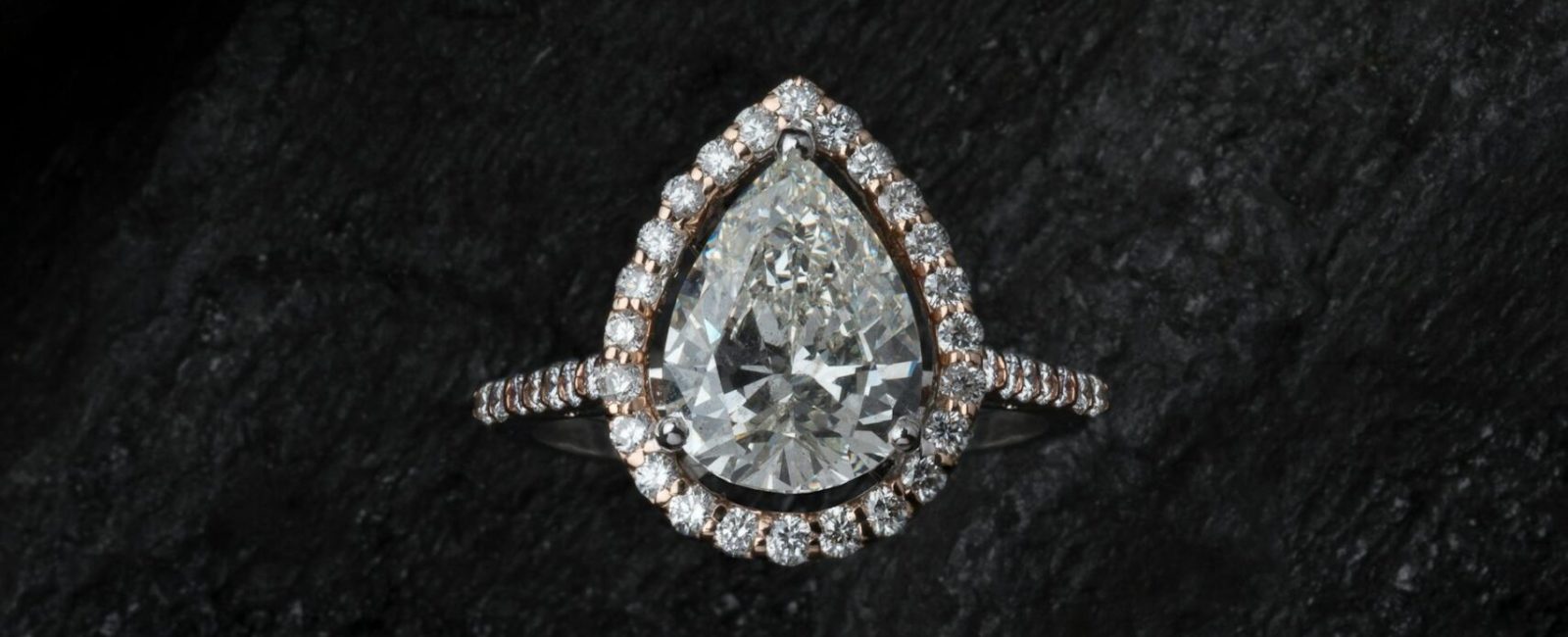The debate between lab-grown vs natural diamonds has gained prominence in recent years, with consumers weighing the benefits and drawbacks of each. This guide will explore the differences, advantages, and considerations of lab-grown vs. natural diamonds to help you make an informed decision.
Understanding the Basics
Lab-Grown Diamonds:
- Creation: These diamonds are created in a controlled laboratory environment using advanced technological processes that mimic the natural formation of diamonds.
- Types: The two primary methods are High Pressure High Temperature (HPHT) and Chemical Vapor Deposition (CVD).
- Characteristics: Lab-grown diamonds have the same physical, chemical, and optical properties as natural diamonds.
Natural Diamonds:
- Formation: These diamonds are formed over billions of years under intense heat and pressure deep within the Earth’s mantle.
- Mining: Extracted through mining processes that can vary in environmental and ethical impacts.
- Characteristics: Each natural diamond is unique, with distinct inclusions and variations formed over time.
Key Differences
1. Origin and Formation:
- Lab-Grown: Created in weeks to months in a laboratory.
- Natural: Formed over billions of years in nature.
2. Environmental Impact:
- Lab-Grown: Generally considered more environmentally friendly, with a smaller carbon footprint and less disruption to ecosystems.
- Natural: Mining can have significant environmental impacts, including habitat destruction and carbon emissions, though some companies are improving sustainable practices.
3. Ethical Considerations:
- Lab-Grown: Free from concerns about conflict diamonds and human rights abuses associated with some mining operations.
- Natural: The diamond industry has initiatives like the Kimberley Process to ensure ethically sourced diamonds, but concerns still exist.
4. Cost:
- Lab-Grown: Typically 20-40% less expensive than natural diamonds of equivalent quality.
- Natural: Generally more expensive due to rarity and the costs associated with mining and distribution.
Visual and Physical Properties
Appearance:
- Both lab-grown and natural diamonds look identical to the naked eye. Even trained gemologists require specialized equipment to distinguish between them.
Quality:
- Lab-grown diamonds can achieve higher purity and fewer inclusions due to controlled manufacturing conditions.
- Natural diamonds may have unique inclusions that some consider adding character and value.
Durability:
- Both types are equally durable, with a Mohs hardness rating of 10, making them suitable for everyday wear.
Market and Value
Resale Value:
- Lab-Grown: Currently, lab-grown diamonds have lower resale value due to their abundance and the evolving market perception.
- Natural: Often retain higher resale value due to their rarity and established market presence.
Investment:
- Lab-Grown: Not typically considered an investment due to their lower resale value.
- Natural: Can be a better investment, especially for high-quality, rare stones.
Considerations for Buyers
Purpose and Preference:
- Determine if the diamond is for everyday wear, a special occasion, or an investment. This will help guide your choice between lab-grown and natural diamonds.
Budget:
- Assess your budget and compare the cost differences. Lab-grown diamonds offer a more affordable option without compromising on quality.
Ethical Values:
- Consider the importance of ethical sourcing and environmental impact. Lab-grown diamonds may align more with these values.
Certification:
- Ensure the diamond comes with a certification from a reputable gemological institute, regardless of whether it is lab-grown or natural.
Technological Advances
Advancements in Lab-Grown Diamonds:
- Recent advancements have improved the quality and size of lab-grown diamonds, making them virtually indistinguishable from natural diamonds.
- Enhanced methods such as Chemical Vapor Deposition (CVD) allow for the production of diamonds that are free of inclusions and other imperfections commonly found in natural diamonds.
Natural Diamond Discoveries:
- Technological advances in mining and processing have allowed for the extraction of larger and higher-quality natural diamonds.
- Innovations in diamond cutting and polishing techniques have maximized the brilliance and value of natural diamonds.
Environmental and Social Impact
Sustainability Initiatives:
- Lab-Grown: Companies producing lab-grown diamonds often emphasize their commitment to sustainability, using renewable energy sources and reducing water usage.
- Natural: Many natural diamond mining companies are improving their practices to minimize environmental damage, such as adopting renewable energy and participating in conservation efforts.
Community Impact:
- Lab-Grown: Production facilities for lab-grown diamonds tend to have a lower community impact, with fewer issues related to displacement and environmental degradation.
- Natural: Diamond mining can have both positive and negative impacts on local communities. While it can create jobs and infrastructure, it can also lead to displacement and environmental harm if not managed responsibly.
Future Trends
Consumer Preferences:
- Increasing awareness of environmental and ethical issues is driving more consumers towards lab-grown diamonds.
- Natural diamonds continue to hold a place of prestige and tradition, appealing to those who value their unique history and rarity.
Market Dynamics:
- The growing acceptance of lab-grown diamonds is likely to influence market dynamics, potentially leading to increased competition and innovation in both segments.
- As technology advances and production costs decrease, lab-grown diamonds may become even more affordable, further shifting consumer preferences.
Final Thoughts
Choosing lab-grown vs natural diamonds depends on personal preferences, budget, and values regarding environmental and ethical considerations. Both options offer stunning beauty and durability, but understanding their differences can help you make a choice that aligns with your priorities.
Discover the perfect diamond for you at MJ Gabel. Our experts can guide you through the options, whether you prefer lab-grown or natural diamonds. Visit MJ Gabel to explore our extensive collection and find the diamond that fits your style and values. Schedule a consultation today to learn more about our ethically sourced and sustainably crafted diamonds.








